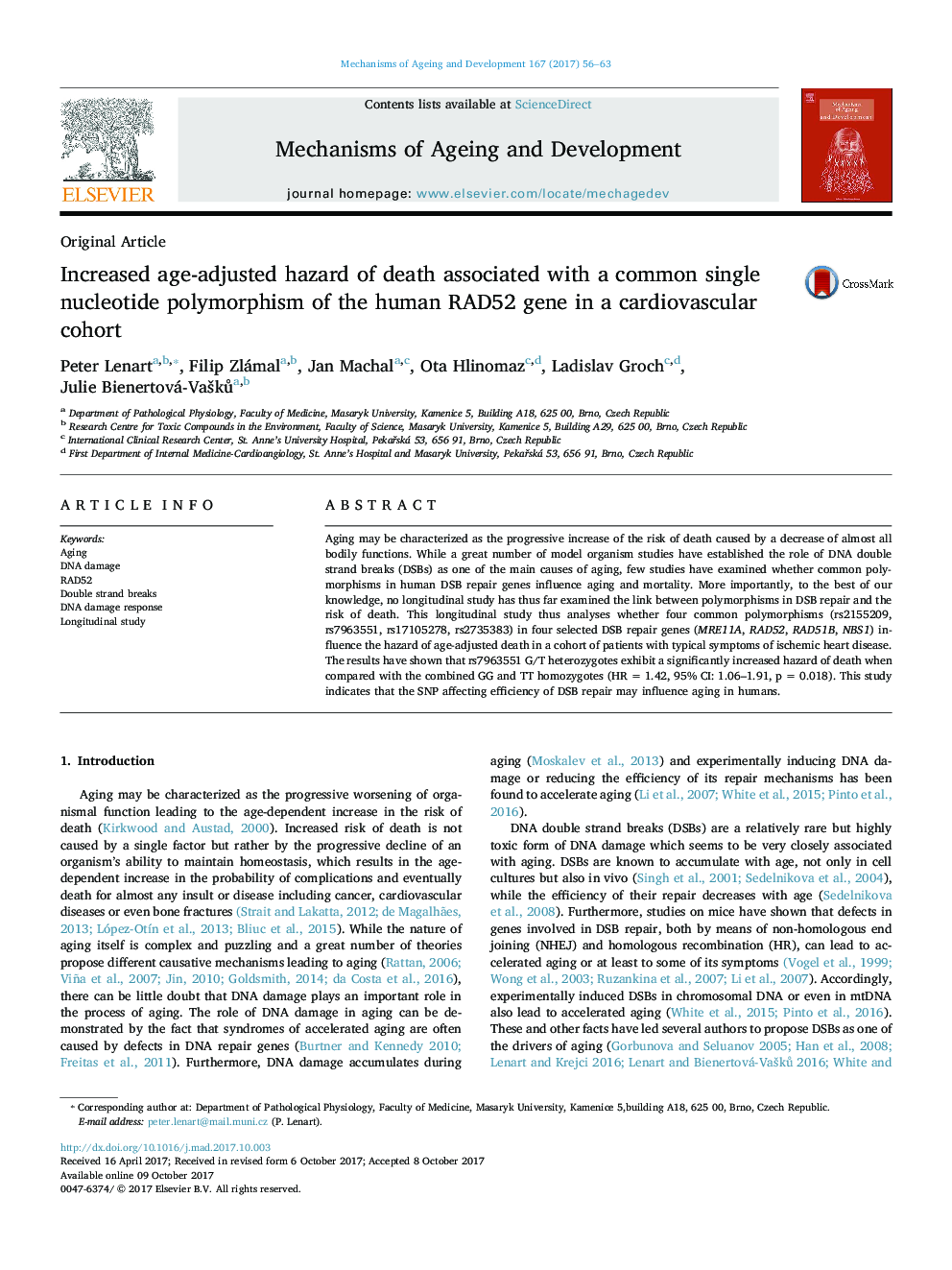| Article ID | Journal | Published Year | Pages | File Type |
|---|---|---|---|---|
| 5503607 | Mechanisms of Ageing and Development | 2017 | 8 Pages |
Abstract
Aging may be characterized as the progressive increase of the risk of death caused by a decrease of almost all bodily functions. While a great number of model organism studies have established the role of DNA double strand breaks (DSBs) as one of the main causes of aging, few studies have examined whether common polymorphisms in human DSB repair genes influence aging and mortality. More importantly, to the best of our knowledge, no longitudinal study has thus far examined the link between polymorphisms in DSB repair and the risk of death. This longitudinal study thus analyses whether four common polymorphisms (rs2155209, rs7963551, rs17105278, rs2735383) in four selected DSB repair genes (MRE11A, RAD52, RAD51B, NBS1) influence the hazard of age-adjusted death in a cohort of patients with typical symptoms of ischemic heart disease. The results have shown that rs7963551âG/T heterozygotes exhibit a significantly increased hazard of death when compared with the combined GG and TT homozygotes (HR = 1.42, 95% CI: 1.06-1.91, p = 0.018). This study indicates that the SNP affecting efficiency of DSB repair may influence aging in humans.
Related Topics
Life Sciences
Biochemistry, Genetics and Molecular Biology
Ageing
Authors
Peter Lenart, Filip Zlámal, Jan Machal, Ota Hlinomaz, Ladislav Groch, Julie Bienertová-VaÅ¡ků,
